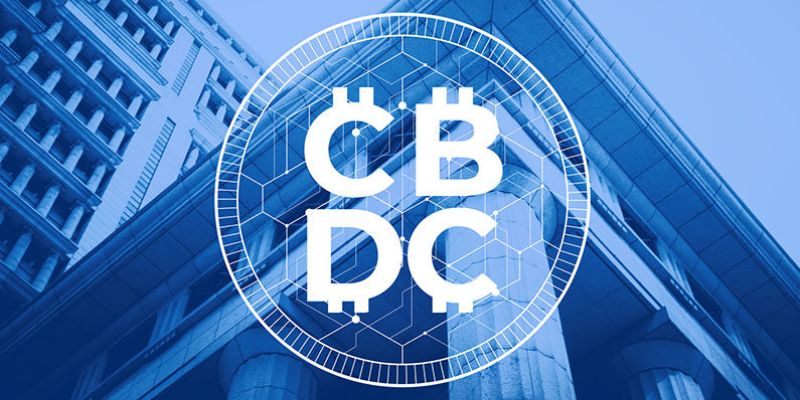Central Bank Digital Currency: A Pillar of Future Financial Stability?
Imagine a world where every dollar in your pocket is a blend of technology and trust. That’s the promise of Central bank digital currency and its potential to enhance financial stability. As the digital age takes firm hold, CBDCs stand at the forefront, poised to revolutionize the banking sector. They offer a fresh pathway for financial transactions, but many wonder how they’ll mesh with traditional banking systems. Will they replace old banks, or reshape them? Dive in as we explore the transformational impact of CBDCs, peeling back the layers to reveal if they truly are the pillars of future financial stability.
Exploring the Transformational Impact of CBDC on Banks and Traditional Banking Systems
CBDC Impact on Banks: Revolutionizing Financial Intermediation
Let’s chat about how central bank digital currencies (CBDCs) are changing banks. This is huge for folks like you and me. Banks have always been where we save and borrow money. Now, imagine a world where our money is digital and super quick to move around. CBDCs could make this happen.
CBDCs are like a turbocharge for banks’ usual jobs. Banks lend money, move it, and keep it safe. CBDCs mean banks might do this all in new ways. People might start to use digital cash more than the paper kind we know. Banks have to be ready to help with this.
But CBDCs can shake things up as well. Banks earn by lending out the cash we give them. If we all switch to CBDCs, banks will have to think quick. They need new ways to make money.
Still, CBDCs can help banks serve us better. With them, sending money can be as easy as sending a text. This could help small businesses get loans faster. Or let us pay for things without cards or cash.
Digital Currencies Vs. Traditional Banking: The Shifting Paradigm
Now, let’s look at digital currencies against old-school banking. We’ve got this system that’s worked for years. You walk into a bank, talk to a person, and make a deal. With digital money, maybe you won’t step into a bank as much.
Digital currencies are set to change all that we know about money. You might wonder about safety with digital cash. Good question. Remember, CBDCs come from central banks. These are the big players who make sure our money keeps its value. They’ve got a plan to keep digital money safe too.
Having a smooth way to pay for stuff and move money around is key. So, central banks pump time and brains into making CBDCs easy and safe for everyone. That’s hot stuff for a reliable money system in the future.
But some banks worry about where they fit in. With CBDCs doing much of the heavy lifting, what’s left for them? They might need to cook up new services or find special ways to keep us coming back.
Then there’s the matter of rules and who sets them. Right now, banks and governments have the say. With CBDCs, laws need brushing up to cover this new type of money. Everyone’s working on that.
In short, CBDCs could be the next big thing. They’re set to mix up how we see banks and cash. It’s not just about new tech but a whole new way of thinking about money. That could lead to better banking for us all.
Whoa, that’s a lot to take in, right? But it’s pretty cool to imagine a world where our cash is all digital and moves at lightning speed. Banks and money have been around for ages, but we might be on the edge of a whole new game.

Financial Stability and Risk Considerations in the Age of Digital Currencies
Digital Currency Stability Concerns: Safeguarding the Financial System
When we talk about CBDCs, or the digital money from central banks, a big worry is their effect on stability. Stability means how well the financial system can stand up under stress. With CBDCs, if not done right, you could see bank runs. Bank runs happen when many people pull money out of banks fast.
We must ask, “How do CBDCs change the risk of bank runs?” They could make them more likely if people switch fast from bank deposits to CBDC during fear of bank failures. But don’t worry. Central banks know this. They work hard to make sure their digital money won’t shake things up this way.
CBDC also means banks might lend less. That’s because they need deposits to make loans. If people hold CBDCs not deposits, lending could drop. Lower lending can slow down economic growth. We don’t want that. So, central banks are looking at ways to keep lending going strong.
CBDC Risk Assessment: Identifying and Mitigating Potential Pitfalls
Now, let’s dive into the risks and how to stop them with good planning. First up, security is key. Hackers are a real threat here. Central banks aim to make CBDCs as safe as our phones or computers.
Another part is how CBDCs fit with the existing laws. This is tricky, but it’s being worked on. The goal is to figure out the best rules for these new digital dollars.
Effect on small and large banks is a concern too. Big banks might be okay, but smaller ones could struggle to adapt. This can hurt competition, which is bad for all of us. So, we need to help smaller banks adjust to the new digital world.
Global impact is a point to think about as well. Money moves around the world fast. CBDC needs to work smoothly across borders. This can help trade and travel.
Lastly, we must talk about how CBDCs promote financial inclusion. This means making sure that everyone, even those without a lot of money or fancy tech, can use digital currency. It’s not just fair, it’s smart business for central banks.
So, you see, CBDCs are more than just new money – they’re a big change with real benefits and some risks. But with careful planning and smart rules, we can make sure they help, not hurt, our financial health. Keep your eye on this space. It is going to be exciting to see how CBDCs transform our money and our lives.

The Intersection of Policy and Technology: CBDCs Shaping Monetary Strategies
CBDC Monetary Policy: Balancing Innovation and Stability
Imagine a world where money moves like text messages. Quick, easy, and digital. This is where central banks and digital money meet. They create Central Bank Digital Currencies, known as CBDCs. These digital bucks can help us stay safe during wild market swings. They can also keep money management smooth.
Let’s think about a giant seesaw. On one side, we have the need to push forward with new tech. On the other, we must keep the money world stable. Central banks play a tough game, finding that sweet spot. They adjust their plans just right to use CBDCs in smart ways. For example, during times when money is tight, digital bucks could move quickly to help people out. This tech can control inflation because it’s easy to track.
Let’s talk safety. With CBDCs, you might wonder if your money is as safe as with old-school banks. The answer is: they plan for it to be. These digital cash sorts use tough tech to lock your money tight. No one wants a bank run where everyone pulls their cash out at once. CBDCs aim to stop this from happening with smart systems in play.
Now, onto CBDC vs traditional banking. Banks keep our cash safe and give it out as loans. CBDCs could change the game but don’t worry. Central banks watch over to make sure everything runs smooth. They check how CBDCs could mix in with usual bank stuff. This means they’ve got an eye on loaning and how we get money in and out. Safety first, right?
Central Bank Digital Innovation: Lessons from National Trials
Here’s the cool part. Some places around the globe have already tried out these digital dollars. These trials help us learn what works and what might cause a snag. They are like test drives for new car tech but for money.
For example, some countries have used CBDCs to make paying for things super fast. They also see if using less cash might make things better for everyone. This could mean fewer fees and more quick deals. But take note, it’s not all smooth sailing. They’ve got to check every angle, like what this means for folks without fancy tech. They also keep an eye out to make sure no one gets left behind.
These trials teach us heaps. They show how to keep the money world steady while letting in the new. They help us see what rules we need so everyone plays fair. Plus, they seek ways to make sure you and I can count on our cash being there.
In short, these digital dollars are here to make life easier. They help banks do their thing in a fresh way. They let us send and get cash with a few taps. All the while, those in charge watch over so things don’t go nuts. They’ve got a big job, but the goal is clear: Have our backs and keep our money world safe.

Legal Frameworks and Inclusion: CBDC’s Role in Broadening Financial Accessibility
CBDC and Financial Inclusion: Towards Equitable Access
Think about a world where everyone can bank. No long lines. No big fees. Just tap your phone and done. This is what CBDCs—central bank digital currencies—promise. They say, “You all can join the bank party.” If you have a phone, you’re set.
Now, hold on—what’s a CBDC again? It’s like the money in your wallet, but digital, and born from the nation’s own bank. It means you get money that’s safe, easy to get, and simple to use. It’s for everyone, no matter where they live or how much cash they have on hand.
CBDCs can help folks who never had a bank account. Around 1.7 billion adults worldwide are in this spot. They keep money at home because the bank is far or pricey. CBDCs can change this. They can make it so every person can pay bills or get cash without hassle or extra costs. Kids in cities or farms can buy books or games the same way.
Digital Currency Regulation: Establishing a Legal Blueprint for CBDCs
But here comes the twist—rules! We need them to make this CBDC dream work right. Without good rules, things can get messy. Think like when you’re playing a game—no rules mean no fun. It’s the same with CBDCs.
Governments and big banks are figuring out the rules now. They want digital money that helps people but keeps things safe. We don’t want bad folks hacking our cash or making fake money, right? That’s why these rules count.
These rules are the guardrails on our digital money highway. They keep us on track, so we don’t swerve off course. They make sure CBDCs are a help, not a headache. For us normal folks, this means we can trust that tap on our phone is secure.
So, when we talk about CBDCs, we’re not just talking cool tech. We’re talking about making sure everyone gets a fair shot at banking. And the rules? They’re the map to getting us there, safe and sound.
When setting up these rules, central banks must listen to the people. They think about how to keep our money safe and check on how we like to use it. They’re like the referees in our digital money game, calling the shots to make sure everyone plays fair. They keep away the cheats and the sneaks.
In the end, with CBDCs, banking could turn into a game where everyone can win. Everyone gets a chance to play, no one sits on the side. Money moves like a quick high-five—fast and easy. And while the brains behind the scenes map out the rules, we get to enjoy the game. That’s what CBDCs are all about: fair play, open doors, and a big welcome to the future of money.
In this post, we dove into how central bank digital currencies (CBDCs) are changing banks and money itself. We saw that CBDCs could make banking better and shift how we view money. But there are risks too. We must keep our financial system safe as we move into digital money.
CBDCs mix policy and tech in new ways. They shape how we use money and make sure it’s stable. Learning from trials, banks can balance fresh ideas with safe steps. Plus, CBDCs can make it easier for more people to access money services. Right rules need to be in place to guide CBDCs.
To close, CBDCs are a big leap for banks and money. They can help many, but we must be smart about the risks. Let’s move forward with care and an eye for fairness.
Q&A :
How does Central Bank Digital Currency (CBDC) impact financial stability?
The introduction of a Central Bank Digital Currency can potentially contribute to financial stability in several ways. Firstly, it can ensure a stable and secure alternative to private digital currencies. Additionally, a CBDC can streamline payment systems and reduce transaction costs, leading to more efficient financial markets. However, the impact also depends on specifics such as design and implementation, which could actually introduce risks if not carefully managed.
What risks could CBDC pose to the traditional banking system?
Introducing a CBDC might pose risks such as disintermediation of traditional banks if people prefer to hold digital currency directly with the central bank. This could reduce the deposits in the commercial banks and impair their ability to lend. Moreover, in times of financial stress, this could trigger digital runs to the safer CBDC, exacerbating liquidity problems for the banks.
Can CBDCs strengthen the monetary policy transmission mechanism?
CBDCs have the potential to strengthen the monetary policy transmission mechanism by providing a new tool for central banks to directly influence demand and spending. If designed with an interest-bearing feature, a CBDC can allow central banks to have enhanced control over the money supply and more precisely calibrate interest rates. However, the effectiveness would largely depend on the CBDC adoption rate and regulatory framework.
How might CBDCs affect cross-border payments?
CBDCs could enhance the efficiency of cross-border payments by reducing the number of intermediaries and by simplifying the transaction process. If implemented on a shared international platform, they may reduce transfer time and costs, lowering the barriers for international trade and finance. Nevertheless, cooperation among central banks is crucial for this to happen, to ensure interoperability and to manage concerns regarding exchange rates and economic sovereignty.
What measures are necessary to ensure the safe introduction of CBDCs?
To safely introduce a CBDC, several measures are vital, including robust technological infrastructure to prevent cyber-attacks, privacy protections to maintain user confidentiality, and regulatory frameworks to prevent illegal activities like money laundering. Moreover, the central bank should perform extensive testing phases and ensure interoperability with existing payment systems, while also educating the public and businesses on how to use and secure CBDCs.

